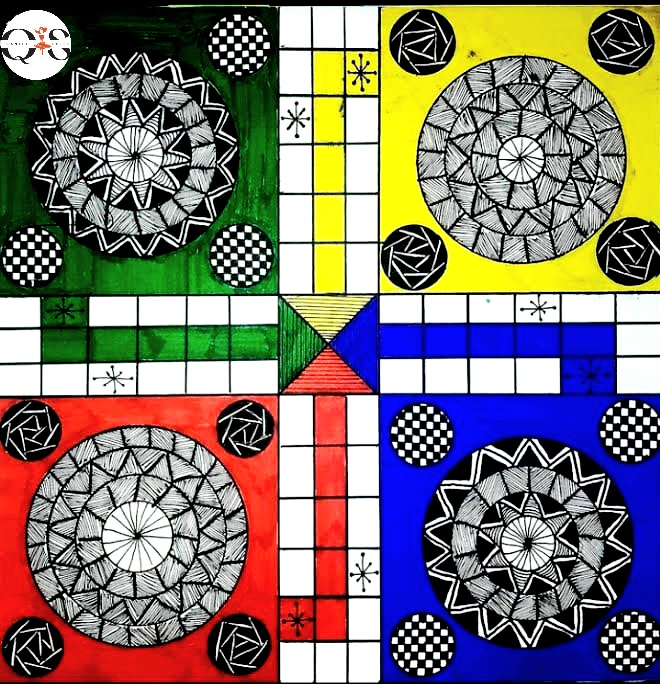Discover the captivating fusion of Ludo and mandala art in this mesmerizing design. Explore the vibrant circles and intricate patterns inspired by the beloved game.
Ludo Mandala art combines the beloved game with intricate patterns in a captivating circular design. The design symbolizes unity and balance, mirroring Ludo’s ability to bring people together. Vibrant lines and shapes within the mandala reflect the game’s tokens, dice, and strategic paths.
Mandala art is a form of geometric art that uses repetitive patterns to create circular artwork. It is often used for meditation or as a means of expressing creativity.
Journey Through Time: The Origins of Ludo
Unveiling the Ancient Game of Pachisi and Its Transformation into Ludo!
The origins of Ludo can be traced back to the ancient Indian game of Pachisi in the 6th century CE. Pachisi has historical significance, depicted in the caves of Ellora and mentioned in the Indian epic Mahabharata.
Explore the captivating story of Shakuni's cursed dice and Yudhisthira's fateful bet as Pachisi evolves into Ludo, a modern delight.
Different Names
Pachisi: The origins of Ludo can be traced back to the ancient Indian game called Pachisi.
Mensch Ärgere Dich Nicht: This is the name for Ludo in Germany. It translates to "Don't Get Angry, Man!" and is a popular board game in the country.
Le Jeu de Dada: Le Jeu de Dada is the French name for Ludo. It roughly translates to "The Dada Game”.
Chińczyk: Chińczyk is the Polish name for Ludo. It means "Chinese Game" but has no direct connection to China.
These examples highlight just a few of the different names that Ludo is known by in various parts of the world. As the game has gained popularity globally, it is likely that it also bears other regional names in different countries.
Variations
Chinese Ludo: This variation is known as "Fei Xing Qi" or "Flying Chess" in China. It follows similar rules to Ludo but includes the addition of airplane tokens.
Super Ludo: Super Ludo is a variation that introduces power-ups and special abilities to the game.
Digital Adaptation
Ludo has seamlessly entered the digital realm with the rise of computers and digital technology. There is a vast selection of digital versions, including mobile apps, online games, and multiplayer platforms.
These adaptations allow players worldwide to connect and play together, regardless of their location. Digital versions offer diverse board themes, customizable rules, and multiplayer options, enhancing the traditional experience.
Conclusion
The fusion of Ludo and mandala art showcases unity, balance, and the joy of play, while honoring its ancient origins and global variations. As Ludo transcends into the digital realm, it continues to connect players worldwide, preserving its cherished tradition. The Ludo Mandala art is a captivating testament to the game’s rich history and enduring appeal.



Keep it up 👍
Amazing